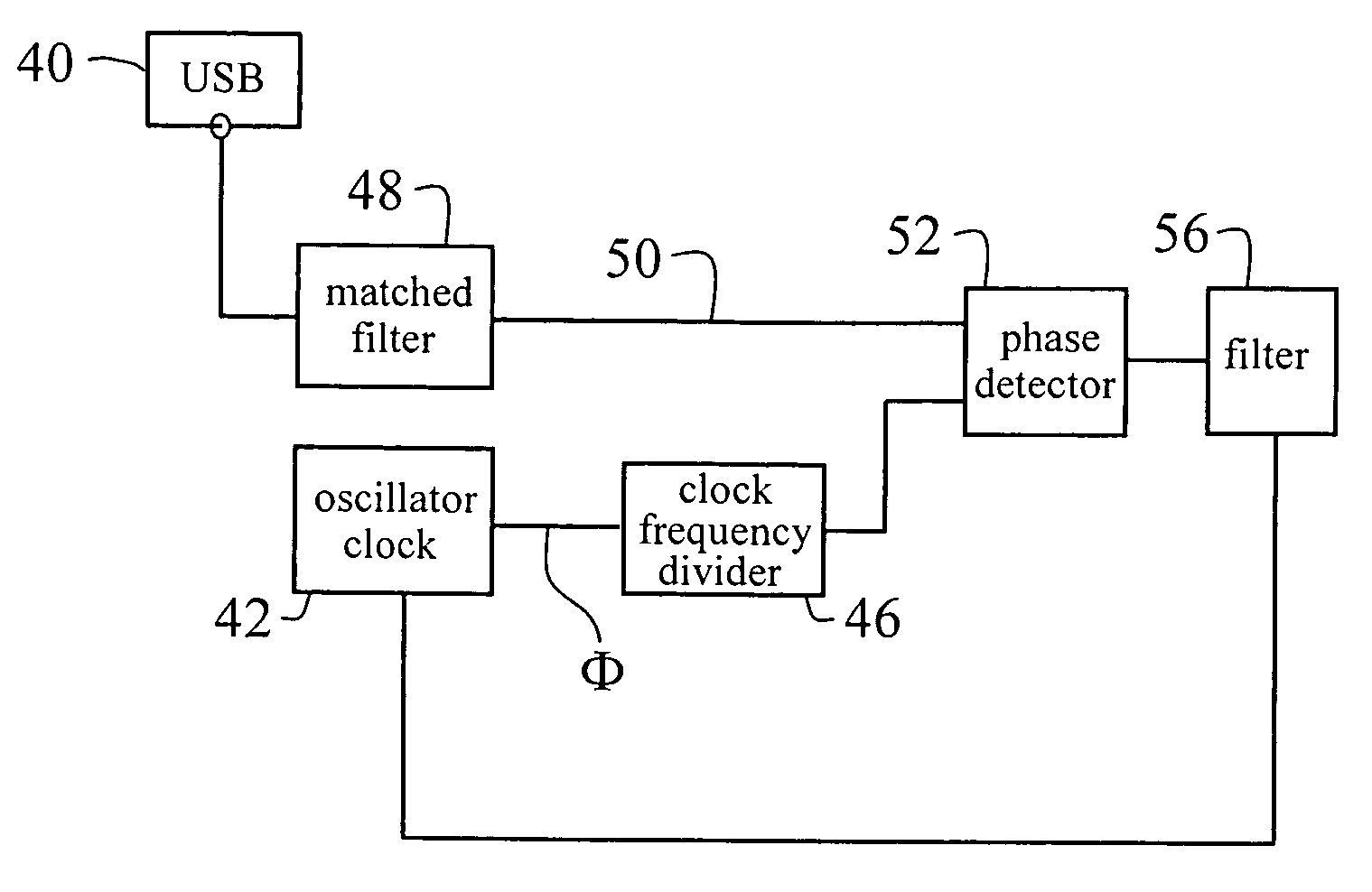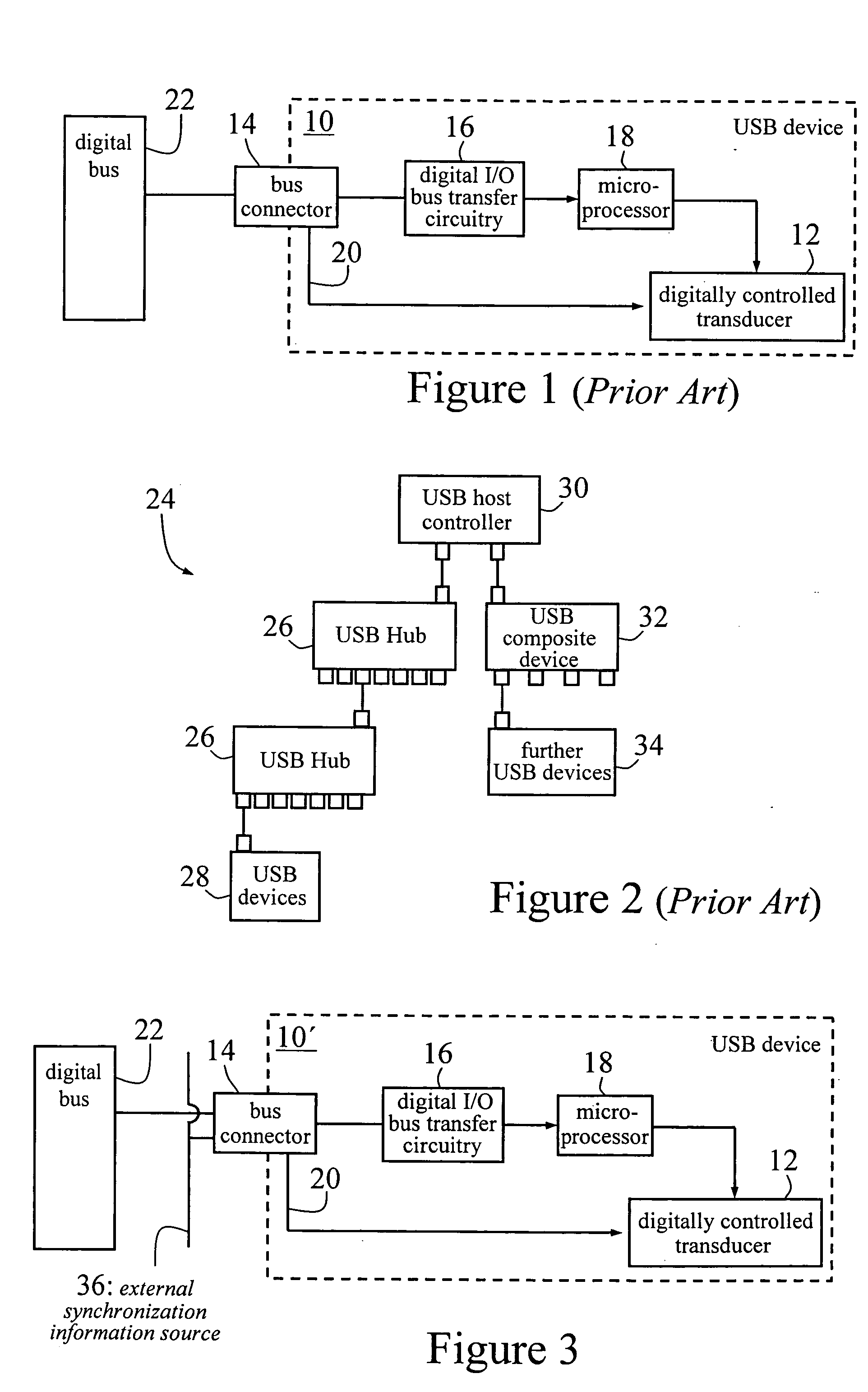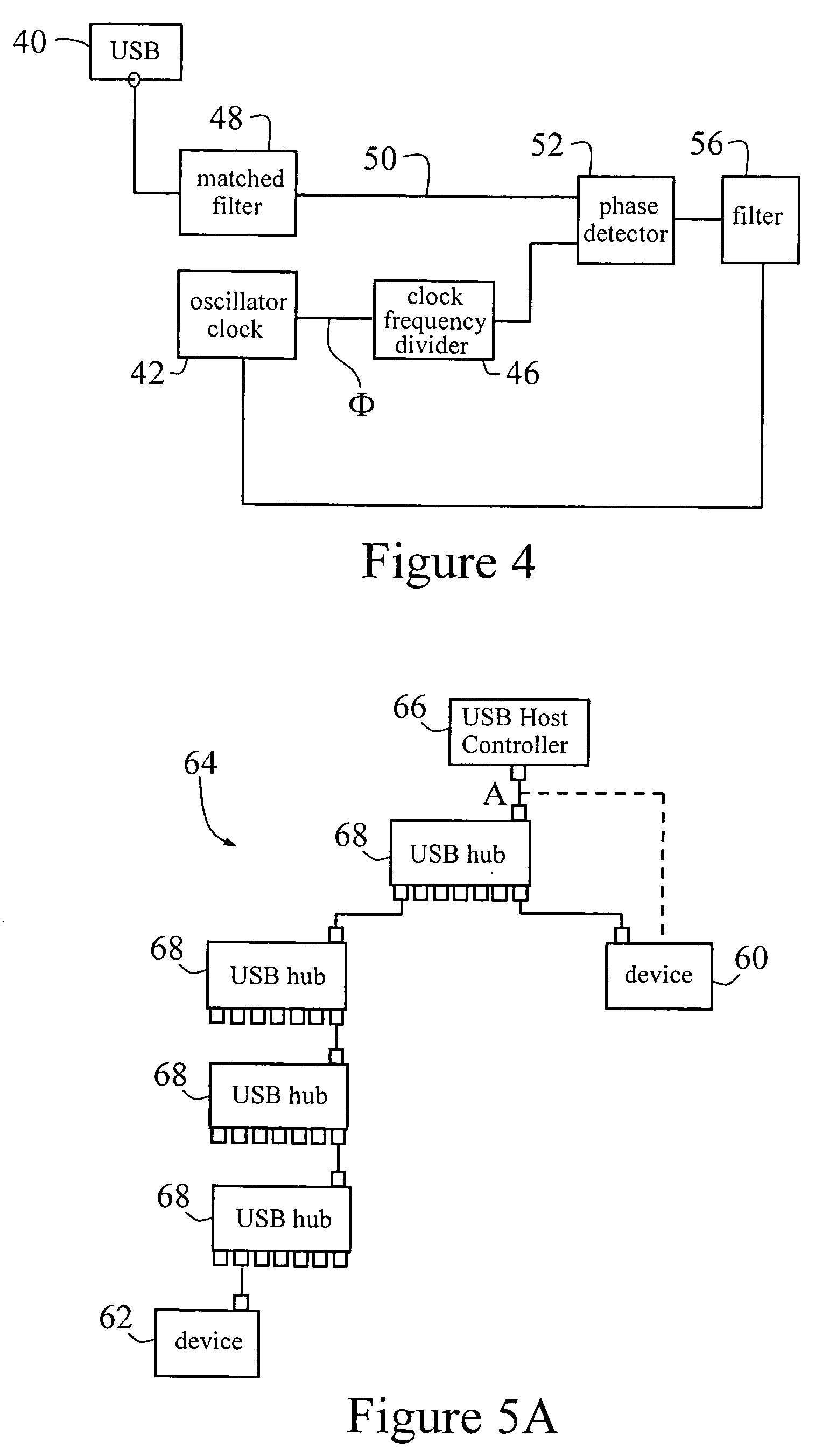Synchronized multichannel universal serial bus
- Summary
- Abstract
- Description
- Claims
- Application Information
AI Technical Summary
Benefits of technology
Problems solved by technology
Method used
Image
Examples
example 1
With no Additional Connector Wiring for Synchronization
[0165] The advantage of a system according to the present invention that does not depend on supplementary synchronization signals is that the devices are not reliant on this information to work in a synchronized manner, and hence ordinary hubs can be used on any stand-alone host. Such a system can be extended to devices that require very accurate synchronization. Thus, an example of such a system is shown in FIG. 7 generally at 96, with upstream USB port 98 and a plurality of back plane hub devices 100, 102 (each, in this example, a 7-port USB hub on back plane 104), which may optionally supply additional power to a plurality of devices 106. Each device 106 may contain a local clock that is frequency and phase locked according to the above-described second embodiment. The back plane 104 and the hubs 100, 102 have the ability to time phase differences between devices 106 (each with random cable length according to the USB specif...
example 2
[0166] A complex system comprising many synchronous USB devices is shown in FIG. 8 generally at 110. Upstream port 111 receives USB communication from the Host. The system 110 includes a plurality of back planes 112, 113,114 each provided with two back plane hub devices 115. Each back plane hub devices 115 comprises a 7-port USB hub and may optionally supply additional power to a plurality of devices 116. Each device 116 may contain a local clock which is frequency and phase locked according to the above-described second embodiment. Further, first or master back plane 112 also has additional circuitry or logic elements 117 (as in FIG. 7), and has the ability to time phase differences between devices 116 (each with different connection topology) by means of elements 117 and the techniques described above in the context of the third embodiment. Furthermore each device 116 contains a phase shift generator for phase shifting the local clock using the techniques described above in the th...
example 3
Additional Connector Wiring for Synchronization
[0168] The simplest example of such an approach according to the above-described embodiments is achieved by connecting all devices to a common synchronization signal either through a proprietary connector containing USB and synchronization information or through a USB connector, as well as a separate synchronization link. The synchronization information is independent of the USB traffic and can therefore be of arbitrary frequency without any great difficulty. The medium for the synchronization information can be any of wireless, electrical or fiber optic means. FIG. 9 depicts schematically a practical example of such a circuit at 120. The circuit 120 includes, in effect, a pair of circuits each comparable to that of FIG. 7, so that 24 USB devices 122 are connected via 7-port USB hubs 124; these in turn can be connected to a PC via upstream USB ports 126. The USB connection topology has no influence on the synchronization signal, which ...
PUM
 Login to View More
Login to View More Abstract
Description
Claims
Application Information
 Login to View More
Login to View More - R&D
- Intellectual Property
- Life Sciences
- Materials
- Tech Scout
- Unparalleled Data Quality
- Higher Quality Content
- 60% Fewer Hallucinations
Browse by: Latest US Patents, China's latest patents, Technical Efficacy Thesaurus, Application Domain, Technology Topic, Popular Technical Reports.
© 2025 PatSnap. All rights reserved.Legal|Privacy policy|Modern Slavery Act Transparency Statement|Sitemap|About US| Contact US: help@patsnap.com



